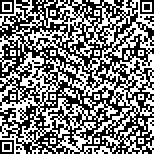| 本文已被:浏览 852次 下载 294次 |

码上扫一扫! |
| 氯己定碘溶液对奶牛乳头消毒效果的研究 |
|
张春刚1,2, 刘光磊2, 张楠3, 苏效双1, 赵国琦1, 吴聪明4, 占今舜1
|
|
|
| (1.扬州大学 动物科学与技术学院, 江苏 扬州 225009;2.上海光明荷斯坦牧业有限公司, 上海 200436;3.上海利康生物高科技有限公司, 上海 201807;4.中国农业大学 动物医学院, 北京 100193) |
|
| 摘要: |
| 为评估氯己定碘溶液对奶牛乳头消毒效果,90头泌乳奶牛被平均分成3个组:Ⅰ组和Ⅱ组奶牛在挤奶前后分别使用氯己定碘溶液和聚维酮碘溶液来对乳头进行药浴消毒,Ⅲ组奶牛不做任何消毒处理。试验持续至12周。结果表明,1)与试验前相比,Ⅰ组和Ⅱ组奶牛日均奶产量和体细胞数(SCC)差异不显著,Ⅲ组奶牛的日均奶产量极显著下降(P<0.01),SCC值极显著升高(P<0.01);2)持续用药12周后,Ⅰ、Ⅱ组奶牛乳房检出菌株数明显减少,头感染率(33.3%、46.7%)和乳区感染率(11.7%、26.7%)均发生极显著或显著下降(P<0.01或P<0.05),而Ⅲ组奶牛却发生了显著上升(P<0.05);3)持续用药12周后,Ⅰ组奶牛乳房内感染菌的头清除率(60.0%)和乳区清除率(83.3%)显著高于Ⅱ组(44.0%和50.0%),而Ⅲ组奶牛的头清除率和乳区清除率均为0。研究表明,在挤奶前后对奶牛进行乳头消毒可有效预防乳房感染风险,且使用氯己定碘溶液对乳头进行药浴消毒,其功效优于聚维酮碘溶液。 |
| 关键词: 奶牛 乳头消毒 氯己定碘 聚维酮碘 |
| DOI:10.11841/j.issn.1007-4333.2018.01.11 |
| 投稿时间:2016-11-26 |
| 基金项目:上海市科委国内科技合作项目(14395810100) |
|
| Study on the antiseptic effect of chlorhexidine iodine solution on dairy cows' teats |
|
ZHANG Chungang1,2, LIU Guanglei2, ZHANG Nan3, SU Xiaoshuang1, ZHAO Guoqi1, WU Congming4, ZHAN Jinshun1
|
| (1.College of Animal Science and Technology, Yangzhou University, Yangzhou 225009, China;2.Shanghai Bright Holstan Co., Ltd., Shanghai 200436, China;3.Shanghai Likang Biological Hi-Tec Co., Ltd., Shanghai, 201807, China;4.College of Veterinary Medicine, China Agricultural University, Beijing 100193, China) |
| Abstract: |
| To evaluate the effect of chlorhexidine iodide solution on teat disinfection, ninety lactating cows were randomly and evenly divided into 3 groups. Group Ⅰ and group Ⅱ were committed to teat dip of chlorhexidine iodine solution and povidone iodine solution separately, whereas group Ⅲ was no treatment. The study lasted for 12 weeks. The results showed that:1) Cow daily milk production and somatic cell count (SCC) value of group Ⅰ and group Ⅱ displayed no significant changes compared to pre-experiment (P>0.05). The average daily milk cow production and SCC value of group Ⅲ respectively declined and increased significantly in 12 weeks (P<0.01). 2) The udder infection rate (33.3% VS 46.7%) and the quarter infection rate (11.7% VS 26.7%) of group Ⅰ and group Ⅱ decreased significantly (P<0.01 or P<0.05). Significant increase were observed in group Ⅲ cows (P<0.05). 3) After 12 weeks experiment, udder clearance rate (60.0%) and quarter clearance rate (83.3%) of group Ⅰ were significantly higher than those of group Ⅱ (44.0% and 50.0%). But the udder clearance rate and quarter clearance rate of group Ⅲ was 0. In conclusion, the application of cow teat dipping pre-and post-milking could effectively prevent the risk of infection. It was better to use chlorhexidine iodine solution to disinfect teats than povidone iodine solution. |
| Key words: dairy cow teat disinfection chlorhexidine iodine povidone iodine |